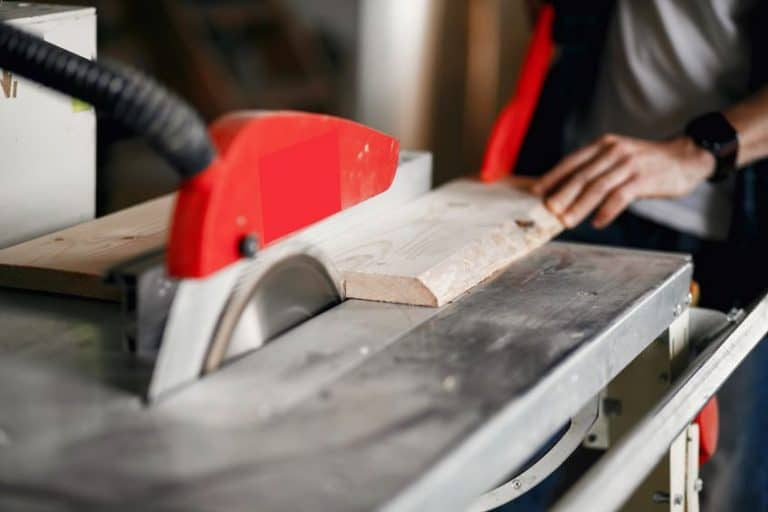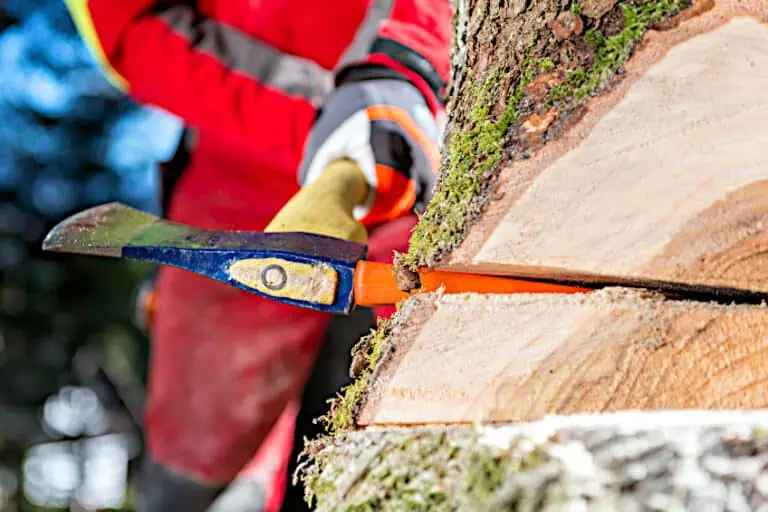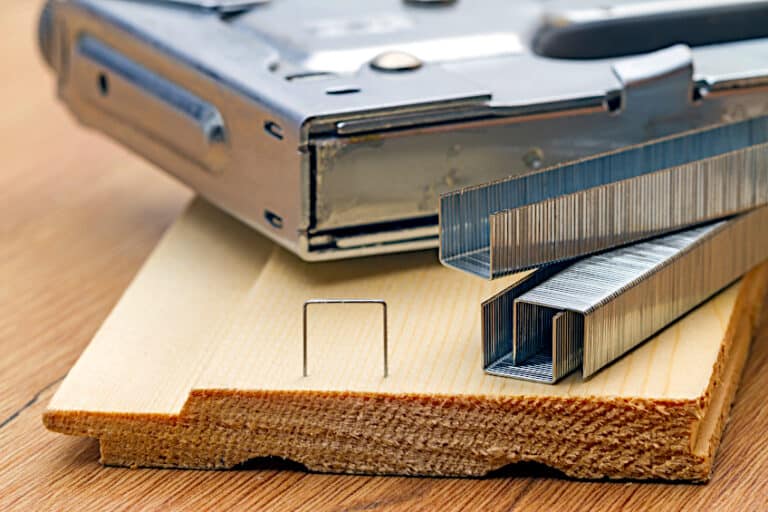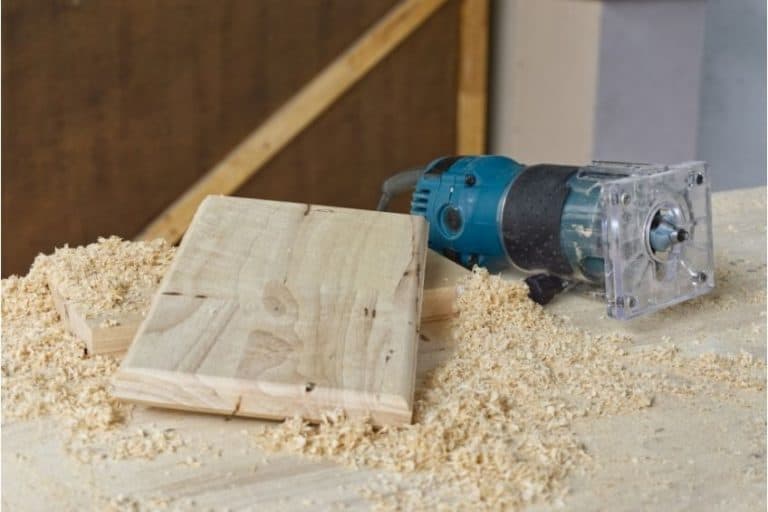How Much Are Pallets Worth? – From Warehouses to Wallets
Pallets, often overlooked but essential in the logistics and transportation industries, hold a hidden value that many may not realize. As a woodwork expert, delving into the world of pallets unveils a fascinating realm where utility meets creativity and sustainability. In this article, we explore the question, “How much are pallets worth?”, and uncover the various factors that contribute to their value, from the type of wood used to their condition, repurposing potential, and market demand. Join us on this journey as we unravel the monetary and environmental significance of these seemingly simple yet impactful wooden structures.
Key Takeaways
- Pallets serve a critical role in logistical operations and their value is influenced by various factors.
- The condition and size of the pallet significantly affect its market value.
- Recycled pallets offer a cost-effective and environmentally conscious alternative in the pallet industry.
Pallet Valuation Fundamentals
The worth of wooden pallets is often understated, yet they are a fundamental component in the global supply chain, allowing for the efficient and safe transport of goods. The value of pallets can vary widely based on factors such as size, condition, and the current market demand for pallets. For instance, new wooden pallets can cost between $13 and $30 each, while used pallets in good condition might be priced between $6 and $12, reflecting their diminished lifespan but continued functionality. In the context of recycling and sustainability, used pallets present an economic opportunity.

Pallets that might otherwise be discarded can provide an additional revenue stream for businesses or individuals savvy enough to tap into the market for recycled pallets. Prices for recycled pallets can range from as little as $0.50 each to upwards of $4, depending on factors such as the pallet size and condition. This creates an accessible entry point for people looking to participate in the pallet industry, whether as a side hustle or a full-fledged business endeavor. Determining the value of pallets relies on various specific criteria, including type, condition, size, market dynamics, and associated costs. These fundamentals ensure a fair assessment in the United States and North American markets.
Types and Conditions of Pallets
The condition of a pallet is crucial to its valuation. Wood pallets in good condition naturally fetch a higher price than damaged ones due to reduced costs in repair and repurposing. Plastic pallets, known for durability, also vary in worth depending on condition.
In 2023, the trend has been towards higher valuations for pallets that maintain structural integrity and can undergo minimal refurbishment before reuse.
Standard Pallet Sizes and Their Impact on Worth
Pallet prices are partly determined by size. In North America, the standard size of 48″x40″ is often preferred as it aligns with industry norms for transportation, handling, and storage. Non-standard sizes may be less in demand and, hence, might be valued lower unless there’s a specific niche requirement for that particular size.
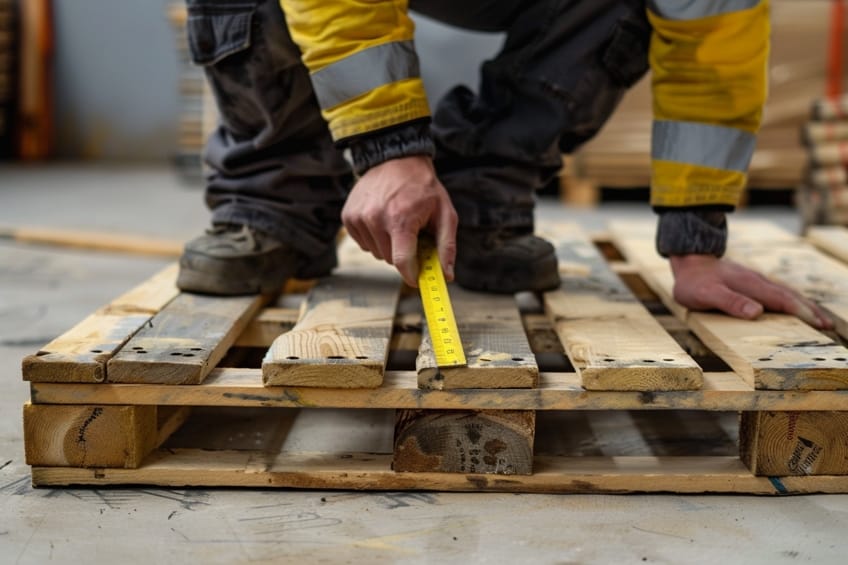
Role of Supply and Demand in Pallet Pricing
The demand for pallets in an area directly influences their pricing. High demand in the commercial zones of the United States can enhance the worth of both wood and plastic pallets. Seasonal peaks in shipping and retail operations usually spike the demand, which, in turn, can lead to increased prices.
Cost Factors Influencing Pallet Value
Several cost factors play a role in the valuation of pallets. Transportation costs for delivery or pickup, the handling involved in sorting and stacking, and the cost of storage all contribute to the final value. Efficient practices in these areas can help to maintain or even improve pallet worth.

Economic and Environmental Worth of Pallet Recycling
Pallet recycling adds both economic and environmental value by reducing the need for new raw materials and decreasing landfill waste. Wood pallet recycling is a significant aspect of sustainability efforts in the pallet industry, with recycling facilities contributing to an ecologically responsible supply chain.
Recycled pallets are assessed not only for their economic worth but for their environmental benefits as well.
Pallet Lifecycle and Management
Pallets play a vital role in the efficiency of supply chains, with their management spanning from initial use to repair, reuse, and disposal. Correctly managing this lifecycle not only cuts costs for businesses but also benefits the environment through waste reduction.

Benefits of Repairing and Reusing Pallets
Repairing and reusing pallets extend their functional lifespan and provide considerable cost savings for businesses. Manufacturers and logistics companies frequently implement repair programs, acknowledging that repaired pallets are equally robust as their new counterparts. Over time, this practice can reduce the need for new pallets, conserving resources and promoting a sustainable operational model.
The North American Pallet Recycling Network plays a pivotal role in keeping the cycle of pallet repair and reuse efficient and cost-effective.
How Businesses Approach Pallet Disposal to Minimize Costs
When pallets reach the end of their usable life, businesses face the need to dispose of them in a way that minimizes costs and environmental impact. Many companies turn to recycling programs, transforming unusable pallets into mulch, energy, or other recycled wood products, thereby diverting them from landfills and contributing to waste management solutions. Others connect with recycling entrepreneurs who specialize in pallet disposal to ensure materials are handled effectively and economically.

Local and National Markets for Buying and Selling Pallets
The market for buying and selling pallets is dynamic and multifaceted, with local businesses, manufacturers, and retailers like Walmart and Home Depot participating in trade. Used pallets, especially those in good condition, are in steady demand; they often reach buyers through pallet brokers or online platforms such as Recycle.net and Craigslist.
By tapping into these markets, sellers of recycled or repaired pallets can connect with a diverse range of buyers, from local manufacturers to larger retail businesses.
Pallet Brokers and Online Platforms
Pallet brokers and online platforms offer a valuable service for the pallet market by bridging the gap between sellers and buyers. Pallet brokers assess the quality and suitability of used pallets and facilitate transactions, ensuring a steady supply for businesses seeking to cut costs without compromising on quality. Online platforms provide a space where local businesses can list available pallets or where manufacturers can find recycled options nearby, making these transactions more accessible and efficient.

Opportunities in the Pallet Industry
The pallet industry offers a range of opportunities for entrepreneurs and businesses to generate value, from recycling ventures to innovations in pallet technology.
Turning Pallet Recycling into a Business Venture
Companies like Kamps Pallets have demonstrated the profitability of pallet recycling. Entrepreneurs seeking financial freedom beyond a traditional 9-to-5 job can consider starting a pallet recycling business as a lucrative side hustle. This industry not only supports community sustainability efforts but can also serve as a viable exit plan for recycling entrepreneurs determined to establish their own enterprises.
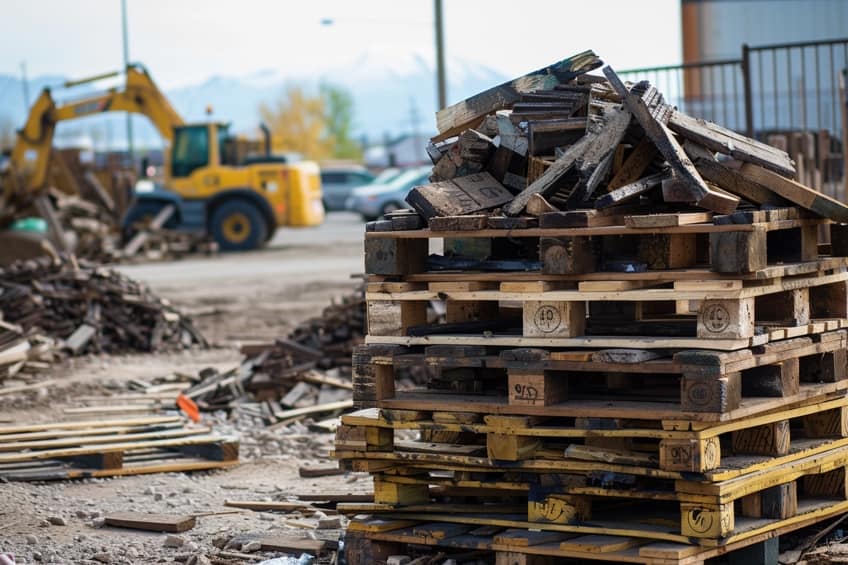
Creative Reuses of Pallets Beyond the Supply Chain
Repurposed pallets have found a significant place in the market, particularly within the community. They are transformed into furniture, walkways, and other structures, tapping into a niche for sustainable, aesthetic, and functional items.
Businesses targeting this segment exploit the creative potential of pallets, contributing to the industry’s estimated value and diversifying its applications.
Trends and Innovations in Pallet Technology
The evolution of pallet technology reflects a commitment to innovation and efficiency within supply chains. Manufacturing companies are constantly improving their offerings, integrating advanced materials and designs to enhance the storing and transporting of goods. This segment of the industry is propelled by a combination of technology and innovation, leading to products that can bear greater weight, maintain durability, and ensure ease of use.
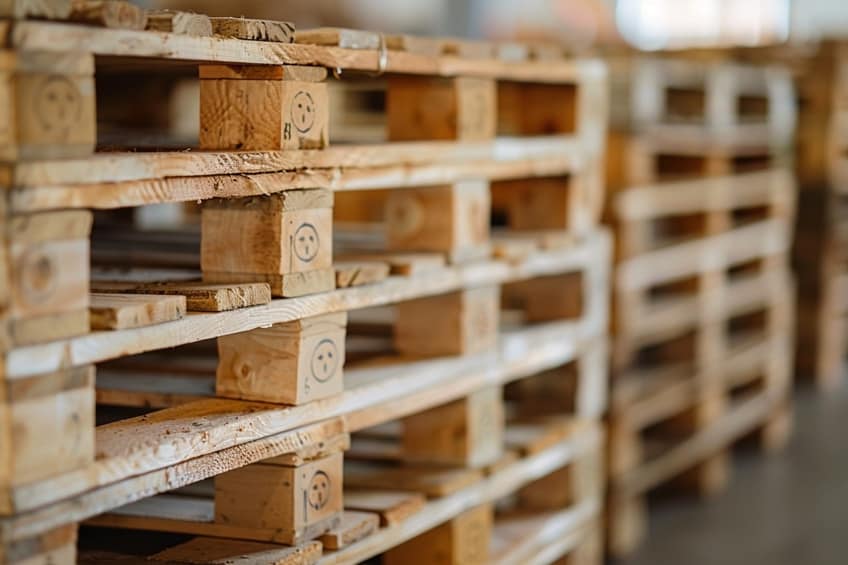
The worth of pallets extends far beyond their initial purpose in shipping and storage. As we’ve discovered, factors such as wood type, condition, repurposing opportunities, and market demand all play a significant role in determining their value. Whether it’s transforming used pallets into rustic furniture pieces, garden planters, or creative DIY projects, their potential for reuse highlights the importance of sustainable practices in woodworking. By understanding and maximizing the value of pallets, we not only contribute to a circular economy but also showcase the beauty and versatility of wood as a renewable resource.
Frequently Asked Questions
What Factors Influence the Price of Wooden Pallets?
Several elements factor into the pricing of wooden pallets. Standard pallet sizes, such as 48 x 40 inches, typically have a consistent market value, whereas custom sizes can demand higher prices if they serve specific needs. Other determining factors include the type of wood, pallet design, regional demand, and the availability of specific pallet sizes.
How Does the Condition of a Pallet Affect Its Resale Value?
The condition of wooden pallets is pivotal in determining their resale value. Pallets in excellent shape, showing little to no signs of wear or damage, can be sold at a premium. Conversely, pallets that are damaged or require repair might only be suitable for recycling and sell for less.
How Can One Identify Pallets That Have Higher Monetary Value?
Pallets with a higher monetary value can be identified by their size, construction, and specialty features. Standard-sized pallets are in high demand and tend to have a steady resale value. Pallets engineered for heavier loads, made from higher-grade wood, or designed for specialized applications, such as those used in pharmaceutical or aeronautic industries, often yield higher values.

I have been into woodworking since 2005 and woodturning since 2011. Because of my love for wood and woodworking, I started woodhappen.com to teach other enthusiasts about how to finish and seal wood, the best woodworking tools, the different types of wood, and everything else related to woodworking! Read more about me here.


